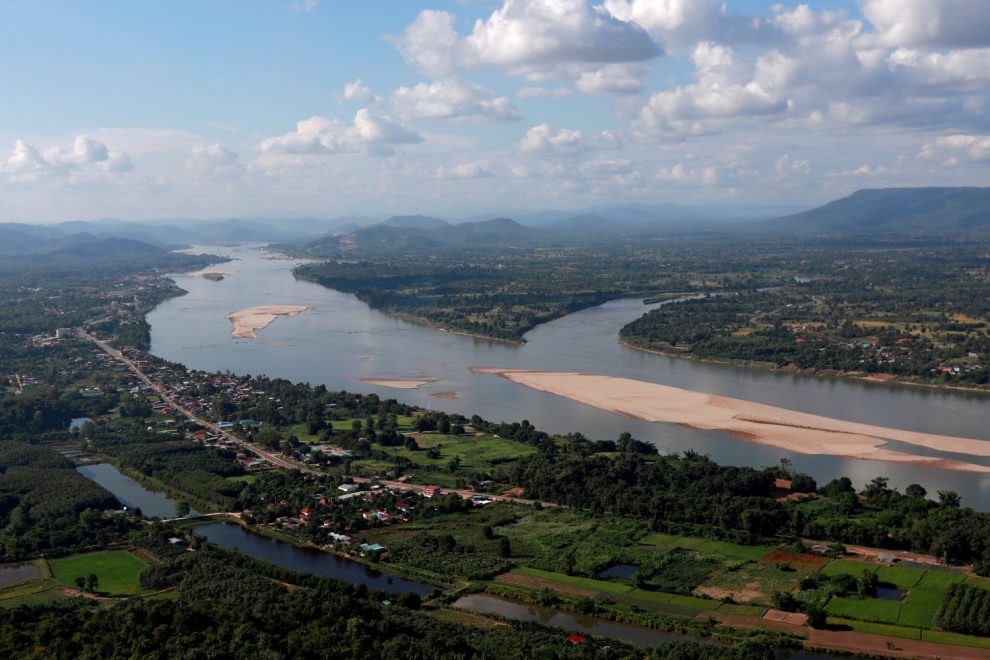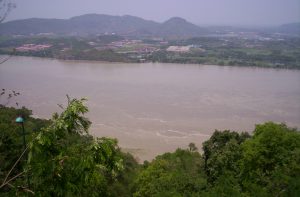China has hit back at US criticism over its Mekong River policies, insisting it helps countries downstream from the vital Asian watercourse and accusing Washington of trying to drive a wedge between Beijing and its neighbours.
Wang Wenbin, a Foreign Ministry spokesman, said China and the southeast Asian Mekong countries have in recent years made substantial progress on water resources cooperation despite outside criticism.
China was reacting to a new US-funded project that uses satellites to track water levels at Chinese dams on the Mekong River and then make the information public, according to a report by Xinhua, China’s official news agency.
A Stimson Center report published data that showed for six months last year China received above average precipitation (both rainfall and snowmelt), but its dams on the Lancang – the Chinese name for the Mekong – held back more water than ever, even as downstream countries suffered through an unprecedented drought.
Wang denied China had caused water issues in other countries, saying: “China welcomes constructive suggestions from countries outside the region on the development and utilisation of water resources by Lancang-Mekong countries, but we firmly oppose malicious moves to drive a wedge between us.”
The Mekong River flows 4,880 km through six countries, including 2,130 km of the upper river in China. The downstream Mekong countries are Laos, Myanmar, Thailand, Cambodia and Vietnam.
Wang said China’s Mekong management system helped reduce water flow during the wet season, while increasing it during the dry season. China also started sharing hydrological data last month with Mekong countries, he added.
Since the construction of hydropower stations along the Lancang, the reservoirs store water in the flood season for later use in the dry season, preventing drastic fluctuation of the discharge flow, Wang said, adding that cooperation also helped Cambodia, Laos and Myanmar prepare comprehensive watershed and irrigation plans.
Duelling narratives
Despite China’s spin over its Mekong River system management, others see a very different narrative.
The Stimson report noted that for the past three decades China has been building dams on the upper basin of the Mekong River, worrying countries downstream that it could one day turn off the tap.
“These findings confirm what many had long suspected,” the report said. “China is impounding much more water than it ever has before and is causing erratic and devastating changes in water levels downstream.”
The report said: “This is part of a long pattern that has driven numerous droughts”, adding “The increasing frequency of drought in the Lower Basin tracks closely to the way China restricts water upstream during the dry season.”
The Mekong Dam Monitor, Stimson’s new project released on Monday, is an online platform which uses remote sensing, satellite imagery, and geographic information system (GIS) analysis to provide near-real time monitoring and reporting and data downloads across numerous previously unreported indicators in the Mekong Basin.
David Stilwell, US assistant secretary of state for the Bureau of East Asian and Pacific Affairs, told members of the Association of Southeast Asian Nations (ASEAN) that there was strength in taking a common position on the Mekong.
He compared their challenges to their territorial struggle with China in the South China Sea.
Beijing lays claim to around 90% of the hydrocarbon- and natural resource-rich area, including encroachment on several ASEAN members’ own UN-mandated 200-nautical-mile exclusive economic zones (EEZ).
In recent years, Beijing has prevented both the Philippines, and Vietnam from exploring for much-needed natural gas in their own EEZs. South China Sea rival claimants include the Philippines, Vietnam, Taiwan, Brunei, Indonesia and Malaysia.
Not enough water?
The new US-funded project comes as Lower Mekong Basin countries try to recover from record droughts over the past two years. Many in these countries also maintain that China’s dams are to blame along with climate change.
The problem in Vietnam, for its part, has become even more acute. The rainy season arrived late in 2019 as well as at the start of the year. It was also shorter than usual, resulting in 8% lower rainfall than normal at 1,240mm, according the country’s Ministry of Agriculture and Rural Development.
Ben Tre in the south was the first of five provinces to declare an emergency in March after salinity levels in rivers and canals surpassed record levels set in 2016.
According to Vietnamese media reports, by late 2019 some 600,000 people in the country’s Mekong region did not have access to freshwater, 160,000 hectares of rice paddies were damaged and farmers lost 800,000 tonnes of rice, resulting in losses of nearly US$250 million.
• Tim Daiss
This page was upgraded on January 19, 2022 for style purposes.
ALSO SEE:
China’s Brahmaputra Dam Plan May Make India Build One Too
Chinese firm to run Laos power grid amid default crisis






















